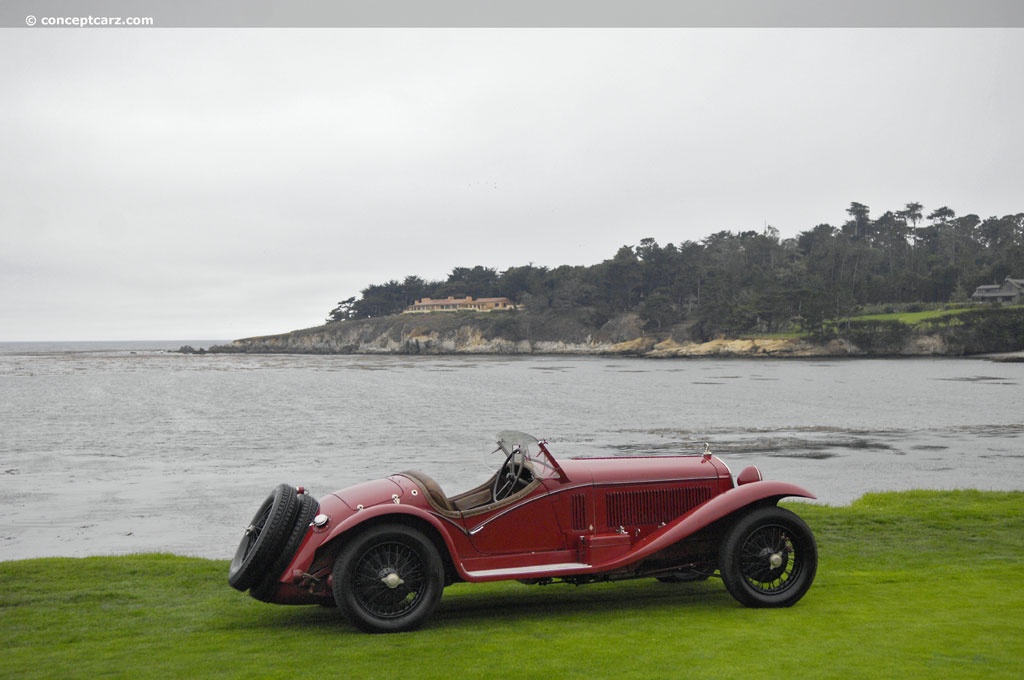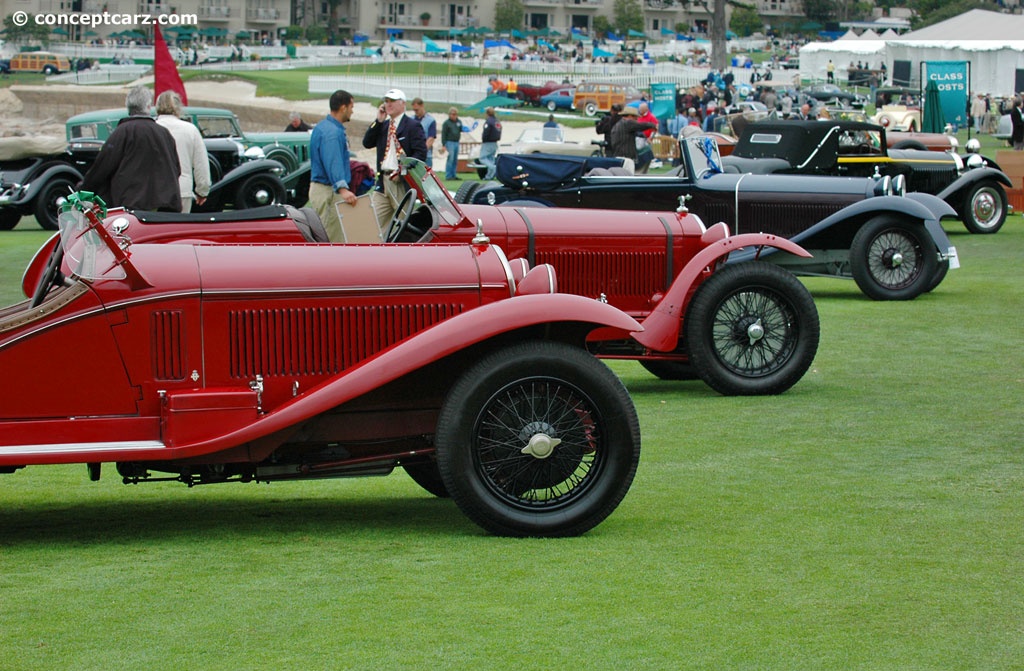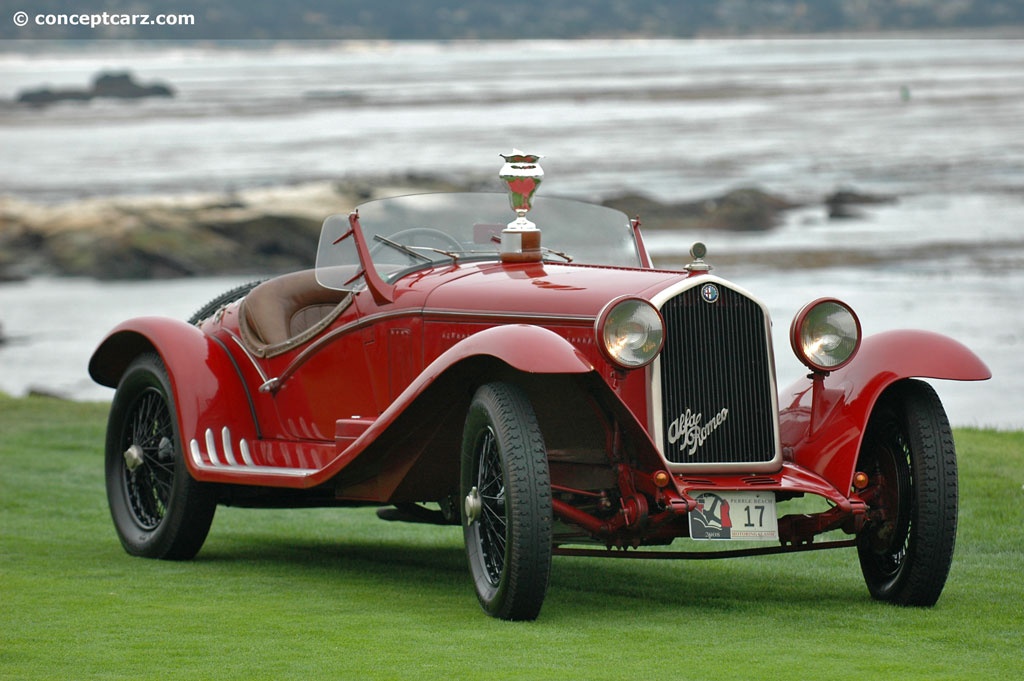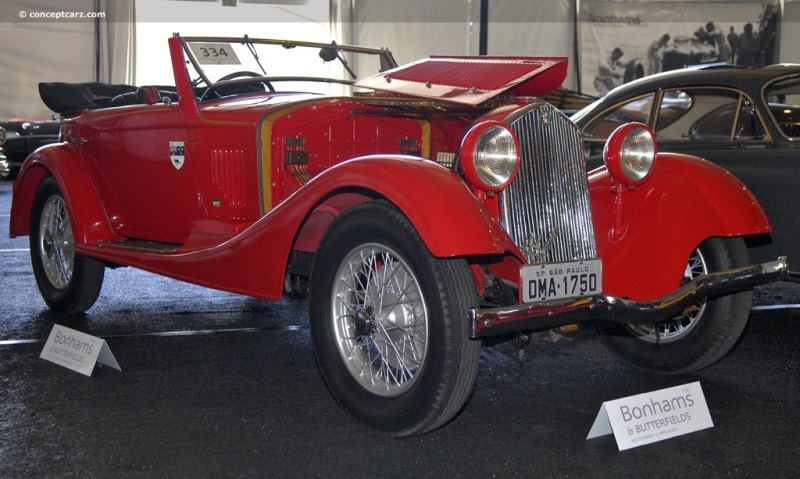Alfa Romeo began as 'Anonima Lombardo Fabbrica Automobili' at Milan in 1910. Five years later, industrialist Nicola Romeo took over, and cars built after World War I took the Alfa Romeo name.Motorsport was part of Alfa Romeo's DNA, and like many of the era, their success relied on talent, creativity, ingenuity, and a bit of luck. FIAT was one of the more successful Grand Prix racing teams during the early portion of the 1920s, but that began to change when engineer Vittorio Jano left to join Alfa Romeo. His exodus in late 1923 signaled the end for the Turin firm's fortunes and the start of something magical at Alfa Romeo, whose team manager Enzo Ferrari had personally recruited the young engineer. Ferrari had joined the team in 1920 as a test engineer and driver, later leaving to form his own Scuderia to race Alfa Romeo cars.Jano's first creation at Alfa Romeo was the P2 which won the inaugural Automobile World Championship in 1925, capturing victory in two of the four championship rounds. Between 1924 and 1930, the P2 won fourteen Grand Prix and major events, including the Targa Florio. Among the company's model lineup was the Giuseppe Merosi-designed RL which remained in production from 1922 through 1927. Its straight-6 engine had overhead valves and displacement sizes ranged from 2.9- to 3.6-liters over its production lifespan. The RLTF, with the 'TF' representing Targa Florio, was the racing version and relied on reduced weight and a modified version of the engine with seven main bearings (up from the standard four) and double carburetors for its competitive advantage.When it became time to update its line of vehicles, Jano's all-conquering P2 was replaced by the new Tipo 6C 1500. Racing regulations had reduced the 2-liter formula to 1.5-liters for the 1926 seasons, and since the P2's engine displaced 1,987cc, it had become obsolete in Grand Prix competition. It would continue to participate in Formula Libre events through to 1929, and in modified form, until the end of 1930. The new straight six-cylinder OHC engine powering the Tipo 6C 1500 had a 62mm bore, 82mm stroke, a displacement of 1,487cc, five main bearings, and its overhead camshafts were driven by a vertical shaft located at the rear of the block. It was presented in bare chassis form near the end of 1925 at various European Motor Shows. A 2.92m wheelbase was used for the Sport and Super Sports versions, while a 3.10m platform was available for more formal coachwork. The suspension was conventional but employed special alloys which reduced the overall weight. As time progressed, more and more components throughout the car were constructed from lightweight materials. The Normale configuration was equipped with a single overhead camshaft and its cylinder block and head were built in a single unit. The Sport and Super Sport used twin overhead camshafts and it typically had a detachable head. Some Suport Sports including the Mille Miglia Speciale, had had the block and head in a single unit called 'testa fissa.', and a few later 'testa fissa' engines had eight main bearings. The Super Sport also received a blower which required the engine to be moved farther back in the frame so the blower could be driven off the nose of the crankshaft. 
Grand Sport Spider by Touring
View info and historyMost of the Normale versions wore formal bodywork and the Sport usually received open bodywork. The factory team used the short chassis Super Sport with the testa fissa engines for competition. Balance was optimized by moving the engine rearward and positioning the fuel tank behind the driver. Among the accolades earned with the 6C 1500 was a victory in 1928 at the Mille Miglia.The total Alfa Romeo 6C 1500 production, lasting from 1927 through 1929 reached approximately 1,058 units. The 6C 1750
Grand Sport Spider by Touring
View info and historyThe bore and stroke of the six-cylinder engine increased to 65x88mm for 1929, resulting in a displacement increase to 1752cc, thus birthing the 6C 1750. The chassis length of 2.92m or 3.10m remained the same, but an additional chassis variant was introduced with the Super Sport (SS) version measuring 2.745m. The Super Sport was offered in both unsupercharged and supercharged configurations and relied on the rearward engine position of the 6C1500 Super Sport for optimal weight distribution. The rearward position allowed for the easy installation of a supercharger if the need arose. The naturally aspirated version developed 64 horsepower while the addition of the supercharger brought output to 85 bhp.The factory team's 6C1750s won the Mille Miglia in 1929 and 1930, along with numerous victories in the up-to-2-liter class in sports car races across Europe, including the class at Le Mans in 1930 and 1932.The first series of 6C1750 cars were known as the 'third series,' as the 6C150 had been built in 'first' and 'second' series configuration. Production changes throughout the lifespan of the 6C1750 continued up to the '6th series' in 1933, which included a 6C1900. 
Grand Sport Spider by Touring
View info and historyAs was customary at the time, most 6C1750 models were sold as rolling chassis and bodied by coachbuilders - often by Touring Superleggera and Zagato. The final derivative of the original 6C 1500 was the 6C 1900 of 1933, by which point 2,579 examples of the 6C 1750 had been built. This included 112 examples of the Super Sport, 257 of the Gran Sport (the Super Sport name was updated to Gran Sport in 1930), 268 of the Sport, and 652 of the Gran Turismo. The Gran Sport had a sloping radiator which gave a more rakish appearance and increased the surface area of the radiator, resulting in improved cooling. The most popular was the Turismo, built from 1929 through 1933 in Series 3 and Series 4 configurations, with a total of 1,131 examples built.
by Daniel Vaughan | Mar 2022

Grand Sport Spider by Touring
View info and history

Grand Sport Spider by Touring
View info and history

Grand Sport Spider by Touring
View info and history
by Daniel Vaughan | Mar 2022
Related Reading : Alfa Romeo 6C History
The Alfa Romeo 6C 2500 was introduced near the end of the 1930s. The 6C name was derived from the engine size, an inline-six while the 2500 represented the engines cubic-centimeter displacement size. The engine was a version of Vittorio Jano designed a six-cylinder engine. The 6C was available in a plethora of body styles and wheelbases and was produced during two different times in history.....
Continue Reading >>
Continue Reading >>
Similarly Sized Vehicles
from 1933
Alfa Romeo Monthly Sales Volume
March 2023
2,390
1933 Alfa Romeo 6C 1750 Vehicle Profiles
Recent Vehicle Additions
Related Automotive News

1932 Duesenberg J Figoni Sports Torpedo Named Best of Show at the 71st Pebble Beach Concours d'Elegance
2022 Charitable Donations Surpass %242.67 Million
A unique Duesenberg reprised its early role as Concours winner by taking the top prize at the Pebble Beach Concours dElegance.
This year, 40 classic cars from 18 countries and 33 states pulled...

Phenomenal Ferraris and Italian Thoroughbreds Offered at Gooding & Company's Pebble Beach Auctions
The auction house announced a stable of Italian star cars, including a 1950 Ferrari 166 MM Berlinetta Le Mans, a 1961 Ferrari 400 Superamerica Series I Coupe Aerodinamico, and a 1954 Ferrari 500 Mondial Series I Spider.
A stunning group of star...

Ex-Scuderia Ferrari Alfa Romeo 8C 2300 Monza Spider By Zagato Scoops Best Of Show At Salon Privé
Alfa Romeo 8C 2300 Monza Spider by Zagato raced by Tazio Nuvolari wins top award
Leading designers present inaugural Churchill Cup to rare Lancia Astura
Duke of Marlborough selects his favourites on two wheels and four
Record entry for the UKs...

'Storie Alfa Romeo' Episode 2: Iconic 6C 1750 Foretells Future And Dominates Its Era
In the 1930s, the 6C 1750 possessed the unique ability to win both races and design awards
With outstanding power to weight ratio and perfect balance, the 6C 1750 launched technical traditions that continue today
The flying man from Mantua...

CHUBB INSURANCE CONCOURS D'ELÉGANCE AT SALON PRIVÉ CONFIRMS WORLD-LEADING COLLECTION OF CARS FOR 2015 EVENT
Outstanding line-up of cars will be paraded at new home of Blenheim Palace as Salon Privé celebrates 10th year anniversary
1937 Delahaye known as Star of India set to be one of the stars of the show, as well as Ferrari 250 GT Berlinetta Tour de...






































